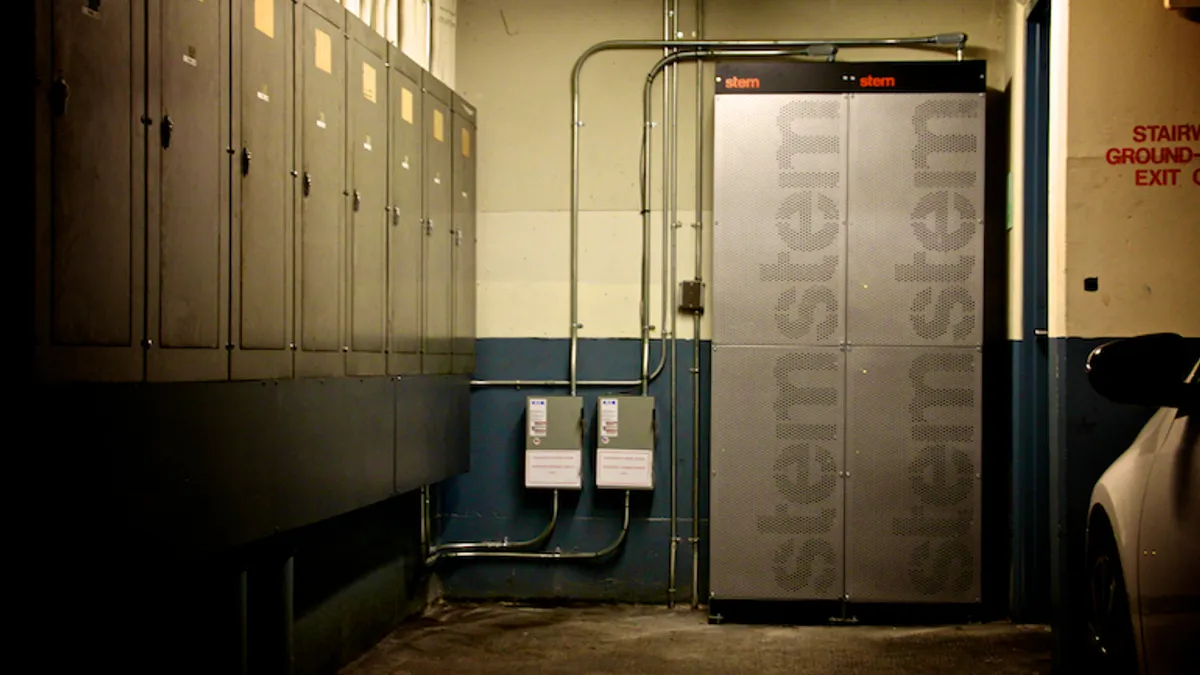Dive Brief:
- Energy storage provider Stem has deployed a pilot project with the Hawaii Electric Company (HECO) aimed at demonstrating how distributed storage can help the utility affordably comply with the state's 100% by 2045 renewables mandate.
- The $2.1 million, 1 MW battery pilot will help an Oahu flower company reduce its demand charge costs — charging the battery at times of low electricity prices and using it to offset building load during high-price periods. Following the first installation, the Honolulu Museum of Art and other buildings will receive batteries as well.
- When not in use for demand charge reduction, the batteries will be available to provide grid support services to HECO. The utility expects that fleets of distributed batteries from providers like Stem could be aggregated to smooth renewable energy integration and provide ancillary grid services that help compensate for variable generation from renewables.
Dive Insight:
The Stem pilot will get $1 million in funding from the Energy Excelerator program within the Pacific International Center for High Technology Research (PICHTR) initiative. Energy Excelerator supports energy product and service innovation.
Many of Stem's installations, like those planned in Hawaii, involve the stacking of battery benefits — allowing batteries to be used both for demand charge reduction for end-users and for grid services by the utility. For many large commercial and industrial operations, demand charges can constitute about half of monthly energy expenses, making batteries an appealing option in high-price electricity markets like Hawaii.
Stacking battery benefits also allows providers like Stem to be compensated more for each battery installation. A recent report from the Rocky Mountain Institute (RMI) evaluated the complex question of the value of energy storage, analyzing 13 fundamental services provided by centralized, transmission-connected, distribution-connected, and behind-the-meter storage.
The net value of storage, RMI concludes, “varies both across and within all electric power markets," but with today’s cost structures, “batteries deployed for only a single primary service generally do not provide a net economic benefit (i.e., the present value of lifetime revenue does not exceed the present value of lifetime costs), except in certain markets under certain use cases.” But, RMI concludes, stacking other uses on them “shifts the economics in favor of storage.”
Stem's new Hawaii installations follow it contracting last year with Southern California Edison for 85 MW of distributed storage in California to provide similar grid services. In Hawaii, the Kauai Island Utility Cooperative recently announced plans for the first fully-dispatchable solar facility, using batteries and panels installed by SolarCity.














